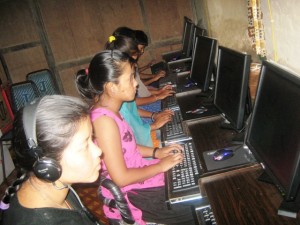Understanding your target audience
By Bettina Ruigies
Today’s fast moving media environment requires a lot of flexibility from media workers. Multimedia skills are a must. Journalists need to be able to produce stories for radio or television, print or online. At the same time, digitization, the Internet and affordable equipment enables anyone who wishes to open a TV station on YouTube or at least run a blog site.
All this technical innovation offers tempting perspectives for hard working and talented journalists. But frustration and failure might set in when it turns out that hardly anybody is watching or reading.
Journalists can be very creative when researching stories which can serve as an eye opener for the audience. It’s said that good stories can literally be found on the street. But nevertheless, proper research, production and distribution to the audience also require solid funding. Thus, a successful media company will also need to think of how to attract financial backing either directly from the audience or from sponsors.
Here journalists could also use their creativity and research skills for understanding their audience. The new media realities also offer more choices for the audience. Times are gone when people would gather at a certain time around a radio or TV set to get the main news from the dominant broadcaster. Today, even the most remote communities are at least able to access different news providers via their mobile phones whenever it’s convenient for them.
This new audience behavior requires re-thinking on the side of news producers. Along with journalistic skills, they also need a strong understanding of specific audience needs. A first important step is to define the target audience, i.e. for whom are we producing the reports? In case our client is another company, we should ask as well: what is their audience?
If we’re mandated to produce stories for students, our topics should focus on career development and urban life. On the other hand, sustainable land development and traditional music would be of greater interest to middle-aged viewers in the countryside.
Media producers should try to view daily life from the perspective of the target audience. This requires little efforts and costs. A small field trip to a student campus or the village market will most likely provide new insights about the target group. Just as with other research areas, we should try to answer questions such as: what are the routine tasks of our target audience and what information do they need to get it done better? What are their aspirations and dreams? What are their fears and frustrations? How do they access news? Finding the proper answers will enable us to produce stories that keep our audience interested in our work.
A media outlet that can anticipate the information needs of its audience or the target group of the client will maintain a stronger position on the market.






Feedback